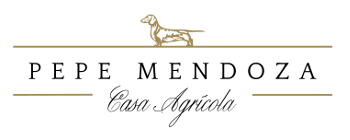Winter Pruning
The weeks prior to the harvest are the time when the vines have the greatest workload. In this period, the grapes can quadruple their weight and the system inside of the plant is filled with nutrients to promote its growth. Thus, the entire underground part of the plant, and especially its blood vessels, are filled with sap to complete this process. For this reason, when we do the harvest, it is convenient to be careful and not to pluck leaves or branches. What is the reason for it? We have to allow the plant to finish its vegetative cycle in order to prepare for winter.
Shortly after the harvest, the sap that floods the plant will descend towards the roots. When this process is carried out we can see how the leaves change color: the intense green of the harvest will turn ocher, purple or brown and later the leaves will fall to the ground. This accumulation of polysaccharides in the form of sap in the roots of the vine will be what will allow them to have their first reserves and use them until spring.
Once the vegetative cycle of the vines is over, it is time for winter pruning, which generally speaking can be from December to early March in areas with risk of frost. Obviously, the moment in which we start pruning will depend first of all on the surface of the vineyard to be pruned and on the personnel we have available. The biodynamic practices and the lunar cycles that we may carry out also have an influence, since it is not the same to prune throughout the month than only in the waning phase of the moon, which is the best time to do it according to biodynamic precepts.
Pruning seems like a simple thing to do: get a pair of scissors and cut what has overgrown. On the contrary, it is a delicate process that, if done wrong, weakens and favors wood and fruit diseases. Each variety of grape requires a certain pruning, as we have varieties that bear the best fruit in the first buds and others from the fourth or fifth bud, the vine being a liana with many possibilities of stunting (the last buds always sprout with greater strength and vigor) and if growth was not controlled by pruning it would grow in a very disorderly way.
The same happens depending on the training system we use in the vineyard: a goblet vine is pruned in one way, a trellis vine is pruned in another; if we harvest by hand in one way, if we harvest with a machine it is pruned in another way; if we want a lot of yield, it is pruned in one way and if we want a low yield, it is pruned in another. Pruning will cause the sap to be redirected through the plant in a different way and we must know in advance how we want the plant to grow for the next harvest. Everything we want to do in the vineyard will require us to prune in a certain way. And, above all, we have to keep our plants healthy and strong, without taking risks with them. For all these reasons, every job we do in the vineyard is very important, since the quality of the wines we will make in the future will depend on it and, most importantly, the survival of our vines.
We encourage the new tendency, which inevitably comes from our ancestors, of respectful pruning, letting the plant keep its green courses and dry paths alive.
Interesting, isn’t it? In a future article on our blog we will tell you about it in detail and we will explain why and why we work like this.
Photo (c) Malaparte Wines
Puede que también te interese

THE VERAISON. What is it and what does it consist of?
Notice: Undefined offset: 0 in /home/plesk/vhosts/casaagricola.es/httpdocs/v2022/wp-content/themes/ave/theme/liquid-template-tags.php on line 759
Notice: Trying to get property 'name' of non-object in /home/plesk/vhosts/casaagricola.es/httpdocs/v2022/wp-content/themes/ave/theme/liquid-template-tags.php on line 759
Notice: Undefined offset: 0 in /home/plesk/vhosts/casaagricola.es/httpdocs/v2022/wp-content/themes/ave/theme/liquid-template-tags.php on line 760
Notice: Trying to get property 'term_id' of non-object in /home/plesk/vhosts/casaagricola.es/httpdocs/v2022/wp-content/themes/ave/theme/liquid-template-tags.php on line 760






